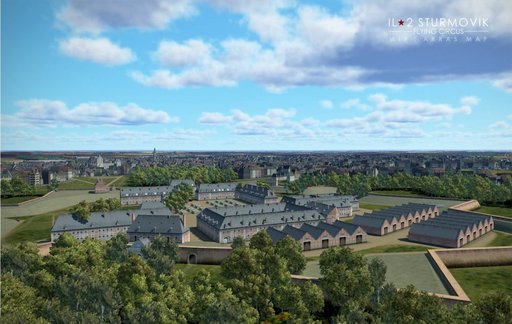
Salute, comrade pilots!
At this time our software engineers are simultaneously developing three legendary airplanes: the P-51D Mustang, the Fw-190 D-9 Dora and the Me-262 Schwalbe, which is the first jet airplane in the "IL-2: Great Battles" series. Undoubtedly, all these airplanes stand out from the rest of the plane-set in terms of their excellent speed characteristics. And as usual, making a virtual copy of a new airplane to our stable brings new challenges and tasks we must perform.
For example, the Me-262 is the first aircraft in our project with a swept wing. It would seem that the difference is not very big, but this circumstance required us to refine the aerodynamics calculation technology. The result of this work will be more accurate characteristics of the stability and controllability of the airplane in lateral movement, which sweep has a significant impact. Daniel has already mentioned about a turbojet engine in the previous diaries, and now work on the Jumo-004B model is in full swing. A dynamic model of the turbo-compressor was assembled, and now work is underway on the engine's thrust, heat and fuel-flow characteristics. Virtually each of the above airplanes required us to make improvements in the models of units and on-board equipment. For example, this is a powerful developed wing mechanization, including slats across the whole wingspan of the Schwalbe, a new gunsight that the Dora and the Schwalbe will receive - they will be the first German airplanes in our project with a gyro gunsight. There is also an automated control of radiators and superchargers on the Mustang. I should note that the P-51D and Me-262 have a sensitive center of gravity when heavily loaded with fuel and ordinance. For example, the Mustang had such a small reserve of longitudinal stability with full fuel tanks that the pilot flight manual instructed pilots to avoid aerobatics with full fuel tanks because of the risk of stall and spin. This quirk of the P-51D will be present in our simulator.
In addition, two new biplanes for the Flying Circus project have entered the “factory testing” stage. These are the legendary Fokker D7 and Sopwith Dolphin, whose 3D models were revamped by our partner Ugra-Media. This stage involves a large number of in-game tests that we perform before giving the airplanes to beta testers. And for such tests, we use special developer tools that allow us to quickly check various animations, visualization of damage models, operation of instruments and visual effects, such as smoke, fires, dust from under the wheels and others. Today I would like to show you a short video with one of these tests. In this video you can see an in-game test (conducted at a special test base on a distant secret island) where the animation of the landing gear damage was checked. I recorded this video in the fall while working on the implementation of the Sopwith Camel to our project. Often, working on "serious games" we forget that our work is also fun. In this video I just wanted to have some fun with my colleagues, to cheer them up after a period of hard work. So today, my colleagues and I decided that maybe it is a good idea to share this video to you. If it evokes a smile on your face - well, then I recorded it not in vain. If you like it, it may possible that we will show you some more in-game tests that our very serious engineers do:
And finally, since we have touched on our Flying Circus project, we would like to show you a series of screenshots from the Arras map which our partners at Ugra-Media are actively working on. In these screenshots you can see the step forward in visualization of the map compared to our previous Great War simulation. Plus, here are the first in-game screenshots of the re-furbished Sopwith Dolphin and Fokker D.VII cockpits which are coming soon:
Fly for fun!















